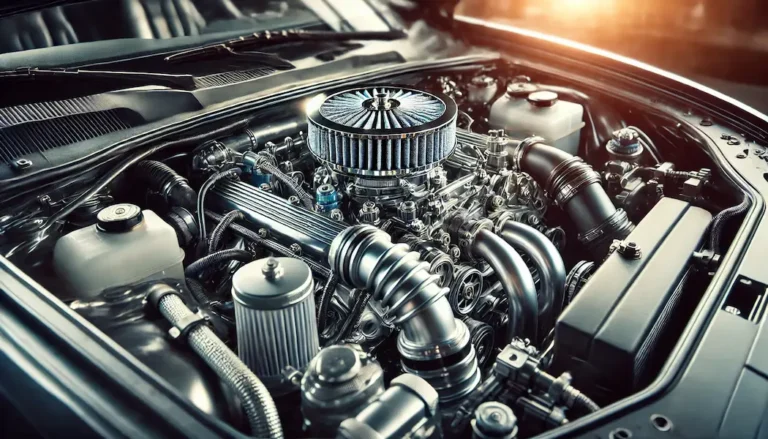Diesel Engine Running Away: Causes and Prevention

Key Takeaways:
- Why It’s Important: A diesel engine runaway is a serious and potentially dangerous event. Understanding the signs and causes is crucial for safety and prevention.
- Causes of Runaway: Fuel leaks, turbocharger issues, and mechanical failures are common causes. Identifying these risks helps in prevention.
- Symptoms to Watch For: Unusual sounds, sudden RPM spikes, and excessive smoke are all red flags for a runaway.
- Immediate Actions: Quick, decisive action can save both the engine and lives. Learn how to handle runaway situations effectively.
- Prevention Tips: Routine maintenance and careful attention to key components are essential to avoid runaway incidents.
Introduction
Diesel engines are reliable, known for powering everything from trucks to heavy machinery. However, a lesser-known risk is a diesel engine runaway. This phenomenon, though often overlooked, can have severe consequences if not properly managed. Recognizing the signs early and understanding what causes this issue are crucial for anyone working with diesel-powered equipment.
In this article, we’ll dive into the causes of runaway incidents, how to spot the warning signs, and most importantly, how to prevent them from happening in the first place.
Causes of Diesel Engine Runaway
Understanding the different causes of a runaway is key to preventing it. Let’s break them down:
Fuel-Related Causes
- Fuel Leaks: Fuel leaks are one of the most common causes of runaway incidents. A small leak, if unnoticed, can quickly escalate into a serious situation. Regular checks can help prevent this from happening.
- Wrong Fuel Type: Using the incorrect fuel type can lead to uncontrollable acceleration. Always double-check the fuel type before filling up to avoid this issue.
Air-Related Causes
- Excessive Air Intake: Too much air entering the engine can cause it to run away. This often happens when an air intake valve fails.
- Turbocharger Problems: A malfunctioning turbocharger can cause an excessive amount of air to enter the engine, which could lead to runaway. Regular maintenance of the turbocharger is essential to avoid this risk.
Mechanical Failures
- Sticking Throttle: A throttle that doesn’t return to its idle position can cause the engine to continue accelerating. Regular checks of the throttle mechanism are necessary to avoid this issue.
- Faulty Fuel Injectors: When fuel injectors don’t close properly, they can flood the engine with fuel, causing a runaway. Keeping the injectors in good condition can help prevent this problem.
External Fuel Sources
- Oil Leaks Into the Intake: If oil leaks into the intake system, it can cause the engine to consume fuel in an uncontrolled manner. Regular inspection of the intake system can help identify this issue early.
- Fuel Contamination: Fuel contamination, especially in industrial settings, can result in other fuels or vapors entering the engine. Ensuring proper fuel filtration and handling can protect the engine from such contamination.
Symptoms of a Diesel Engine Runaway
If you notice any of the following signs, it’s essential to act quickly:
- Unusual Engine Noises: A sudden increase in engine noise could indicate a problem.
- RPM Spikes: A sudden rise in revolutions per minute (RPM) is a clear warning of potential runaway.
- Excessive Smoke: Dark smoke coming from the engine indicates it’s burning too much fuel.
- Engine Overheating: Rapid engine temperature rise can signal an uncontrollable acceleration situation.
- Vibrations or Strange Behavior: Any unusual engine behavior, including shaking, should be checked immediately.
- Difficulty Controlling the Vehicle: If the engine runaway is severe, it may be difficult to control the vehicle.
What to Do During a Diesel Engine Runaway
Quick action can make a significant difference:
- Emergency Stop:
- Stop the Engine: If the engine has an emergency stop button, use it immediately.
- Block the Air Intake: If there’s no emergency stop, cover the air intake to cut off the engine’s air supply and stop it.
- Stay Safe:
- Evacuate the Vehicle: If the situation escalates, ensure everyone is safely away from the vehicle.
- Guide the Vehicle to Safety: If the vehicle is still manageable, drive it to a safe area to prevent further damage.
How to Prevent Diesel Engine Runaway
The best way to deal with a runaway is to prevent it from happening in the first place. Here’s how:
- Routine Maintenance: Regular inspections are crucial in spotting potential issues like fuel leaks or faulty injectors before they turn into a runaway situation.
- Monitor Critical Components: Focus on checking critical parts such as fuel injectors, turbochargers, and throttle mechanisms.
- Proper Fuel Handling: Ensure fuel is stored and handled correctly to avoid contamination. Make it a habit to check for leaks regularly.
- Turbocharger Maintenance: Keep the turbocharger in good working condition to prevent issues that could lead to runaway.
- Air Intake Monitoring: Avoid over-boosting and ensure the air intake is functioning within safe limits.
Case Studies of Diesel Engine Runaway Incidents
Real-life examples show how important it is to be vigilant:
- Industrial Equipment: A runaway due to an oil leak in industrial machinery highlighted the importance of regular checks and quick response.
- Marine Engines: A turbocharger failure in a boat caused a runaway event, showing how vital maintenance is, especially in harsh environments.
- Road Vehicles: A truck experienced runaway due to fuel contamination, which led to stricter regulations on fuel handling in the industry.
Technologies to Prevent Diesel Engine Runaway
Modern technologies can help prevent runaway incidents:
- Engine Shutdown Devices: Automatic shutdown systems can stop the engine before it spirals out of control. These systems should be used whenever possible.
- Real-Time Monitoring: Advanced sensors that detect abnormal conditions can trigger alarms to prevent runaway before it escalates.
Economic and Environmental Impact of Diesel Engine Runaway
- Repair Costs: Engine repairs or replacements following a runaway can be costly. Regular maintenance is much more affordable than dealing with major damage.
- Business Disruption: The downtime caused by runaway incidents can result in significant productivity loss.
- Environmental Damage: A runaway engine can release harmful emissions, contributing to both immediate and long-term environmental damage.
Training and Awareness
Preventing runaway incidents requires knowledge and preparation:
- Employee Education: Training staff on how to recognize symptoms of a runaway and how to respond quickly can save lives and reduce damage.
- Public Awareness: Public education about the risks and proper actions to take during a runaway incident is also crucial.
Conclusion
Preventing a diesel engine runaway is essential for safety, efficiency, and environmental protection. By staying on top of maintenance, recognizing warning signs early, and using modern technology, the risks of runaway incidents can be significantly reduced. The key is to act promptly and always be prepared.
Frequently Asked Questions
- What is a diesel engine runaway? A runaway occurs when the engine consumes fuel uncontrollably, causing it to accelerate beyond safe limits.
- Can a diesel engine runaway be stopped once it starts? Yes, by taking quick action to cut off the fuel supply or block the air intake.
- How can regular maintenance prevent runaway? Regular inspections help identify potential problems like fuel leaks or faulty injectors, which can prevent runaway events.
- What are the most common causes of runaway? Fuel leaks, excessive air intake, turbocharger failure, and mechanical issues are the most common causes.
- What signs indicate a potential runaway? Look out for unusual noises, sudden RPM spikes, excessive smoke, and difficulty controlling the vehicle.
Thanks for checking out this article on EngineEcho.com! Hope you found this article: "Diesel Engine Running Away: Causes and Prevention" helpful! If you liked it and want to dive into more car engine topics, head over to our homepage. There's always something new to discover in the world of engines. Enjoy your reading journey!
Check out our previous article: Best Places to Buy LS Engines






